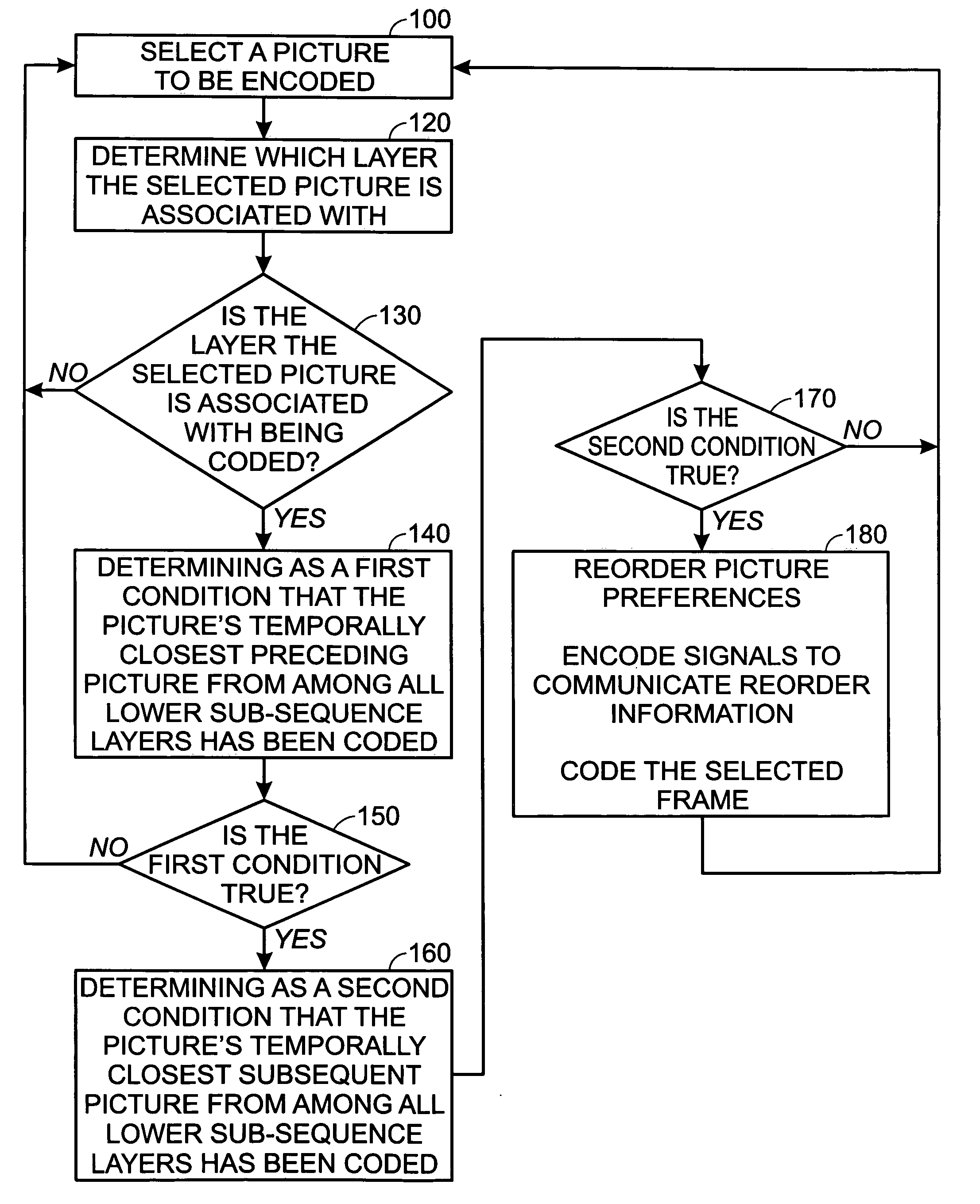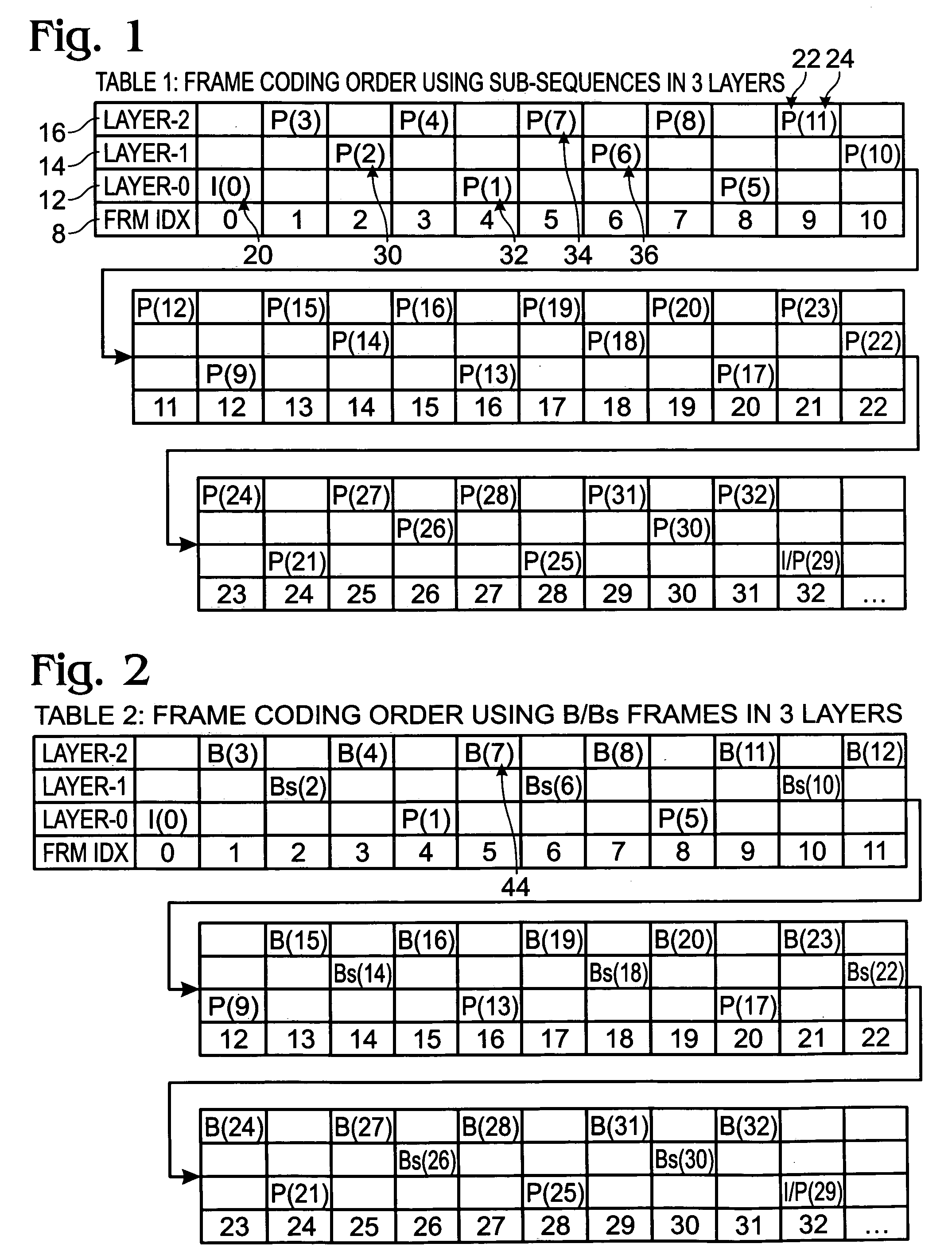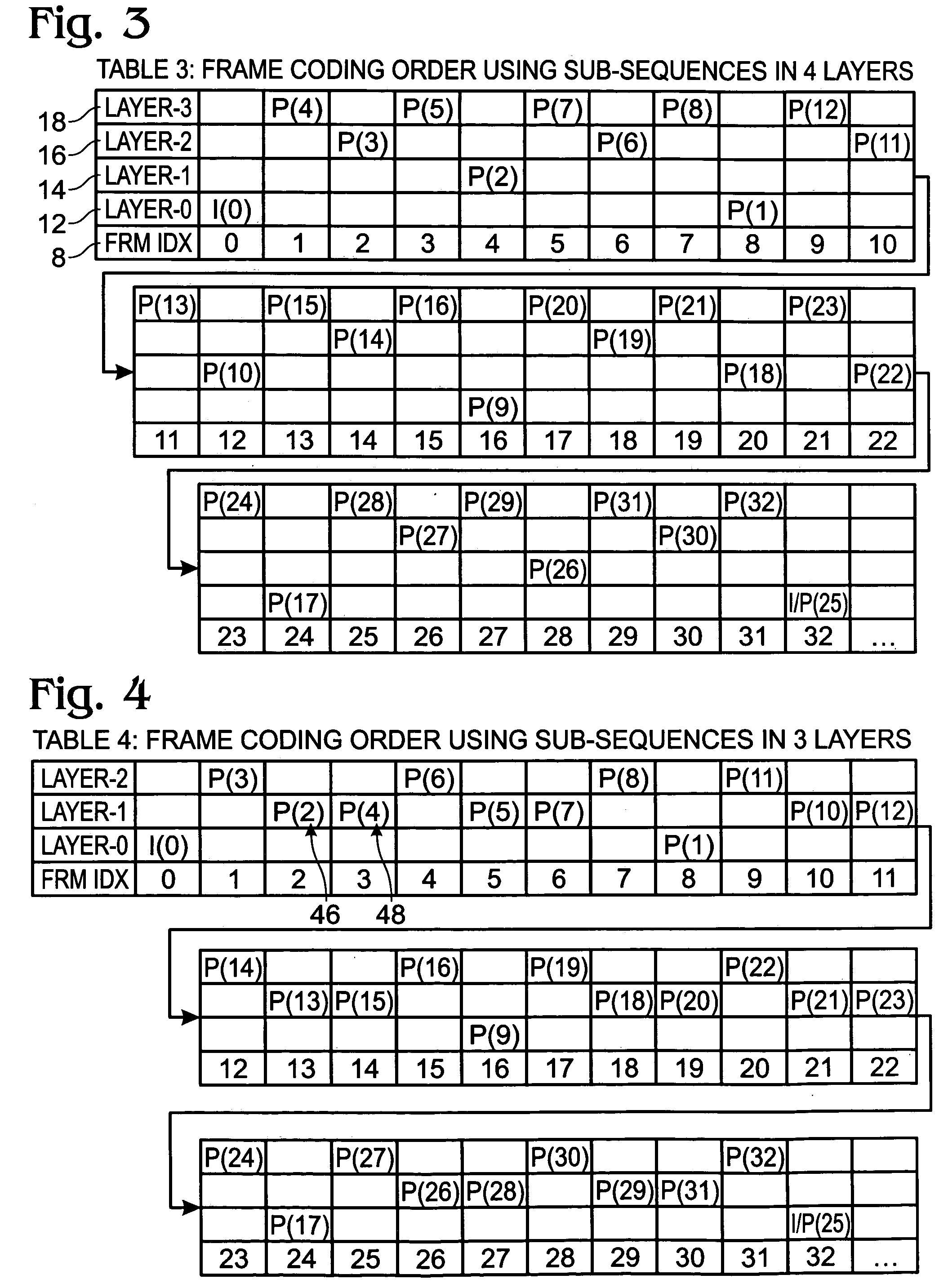Temporal scalable coding using AVC coding tools
a technology of coding tools and coding tools, applied in signal generators with optical-mechanical scanning, color televisions with bandwidth reduction, etc., can solve the problems of limited dpb decoding buffers, complex compensating temporal filters, and large gop size, so as to achieve reasonable coding efficiency, improve coding efficiency, and efficient temporal scalable coding
- Summary
- Abstract
- Description
- Claims
- Application Information
AI Technical Summary
Benefits of technology
Problems solved by technology
Method used
Image
Examples
Embodiment Construction
[0016] For Baseline / Extended profile applications, where temporal scalability might be very beneficial, supplemental enhancement information (SEI) messages may be utilized. Additionally, for Main and FRExt profile applications, we can use the B pictures and the Stored-B pictures (Bs in short). B pictures naturally enable scalability but its coding efficiency might not be as good as that of Bs. For both Baseline and Main profile applications, the reference-reordering tool in AVC is useful for retaining reasonable coding quality.
[0017] The AVC standard allows a sequence to be coded in layers indicated by the sub-sequence messages. A picture coded in a higher layer can use other pictures in the same and lower layers as references. Meanwhile, a picture in a lower layer cannot use picture from a higher layer as reference. The coding tool naturally enables a temporal scalable coding. However, there has not been any open discussion on how to use it for an optimal coding efficiency.
[0018]...
PUM
 Login to View More
Login to View More Abstract
Description
Claims
Application Information
 Login to View More
Login to View More - R&D
- Intellectual Property
- Life Sciences
- Materials
- Tech Scout
- Unparalleled Data Quality
- Higher Quality Content
- 60% Fewer Hallucinations
Browse by: Latest US Patents, China's latest patents, Technical Efficacy Thesaurus, Application Domain, Technology Topic, Popular Technical Reports.
© 2025 PatSnap. All rights reserved.Legal|Privacy policy|Modern Slavery Act Transparency Statement|Sitemap|About US| Contact US: help@patsnap.com



